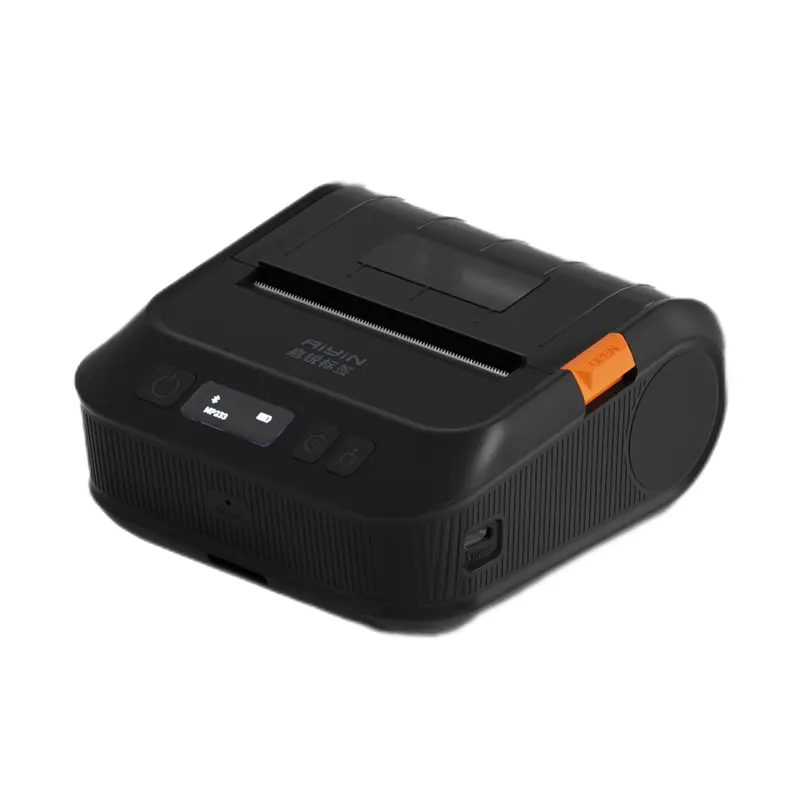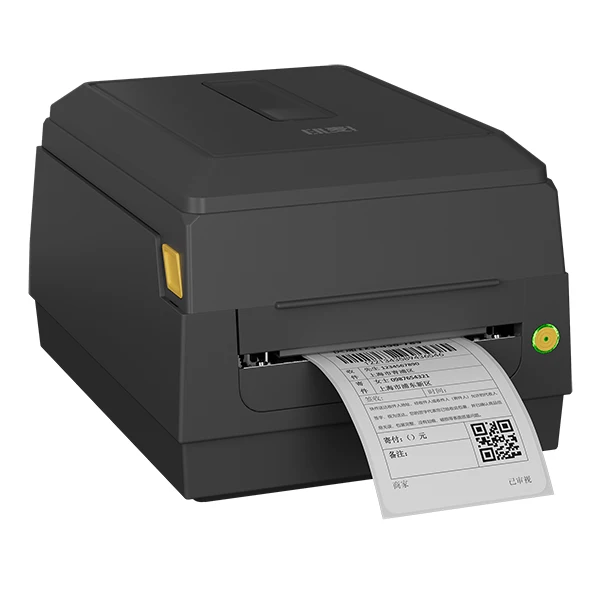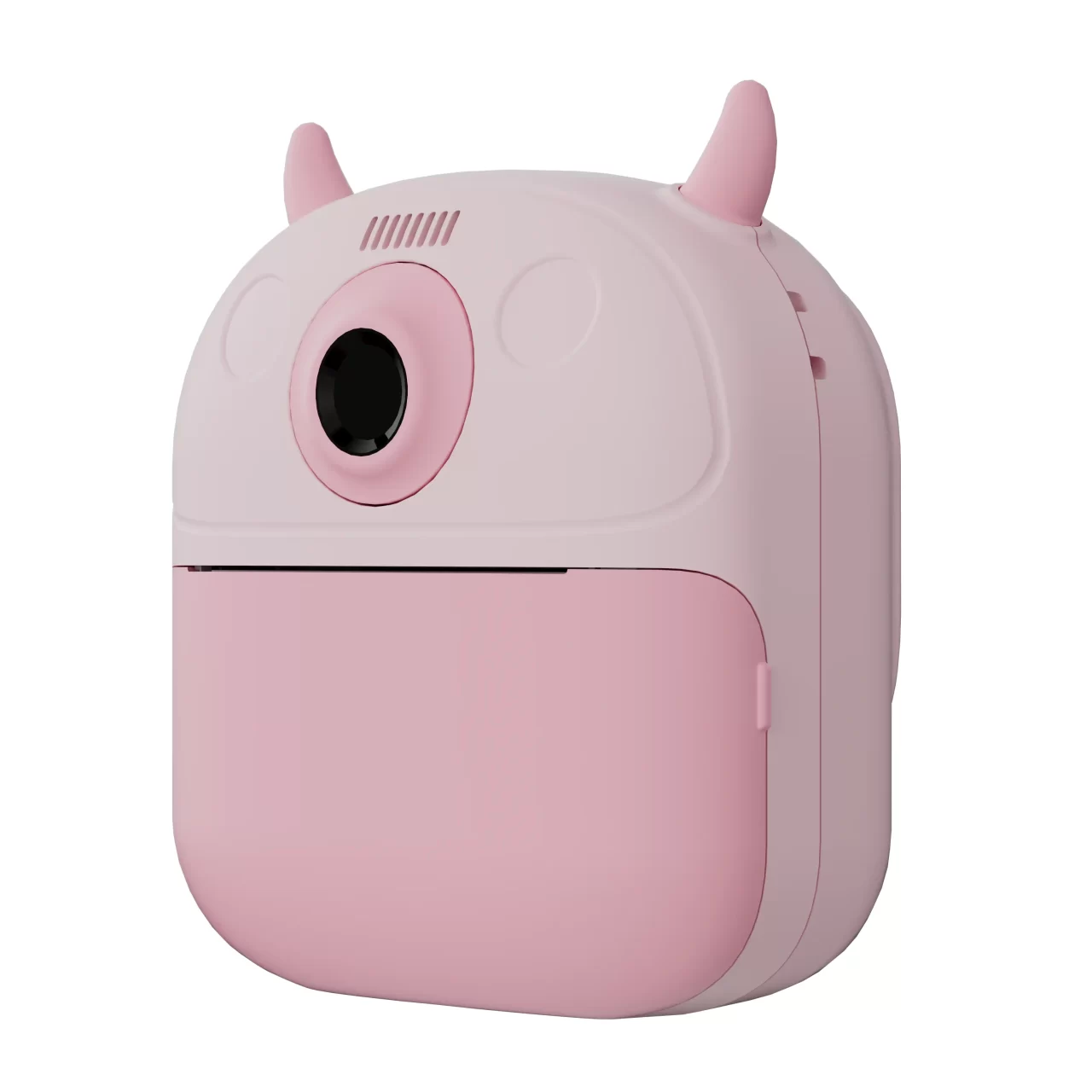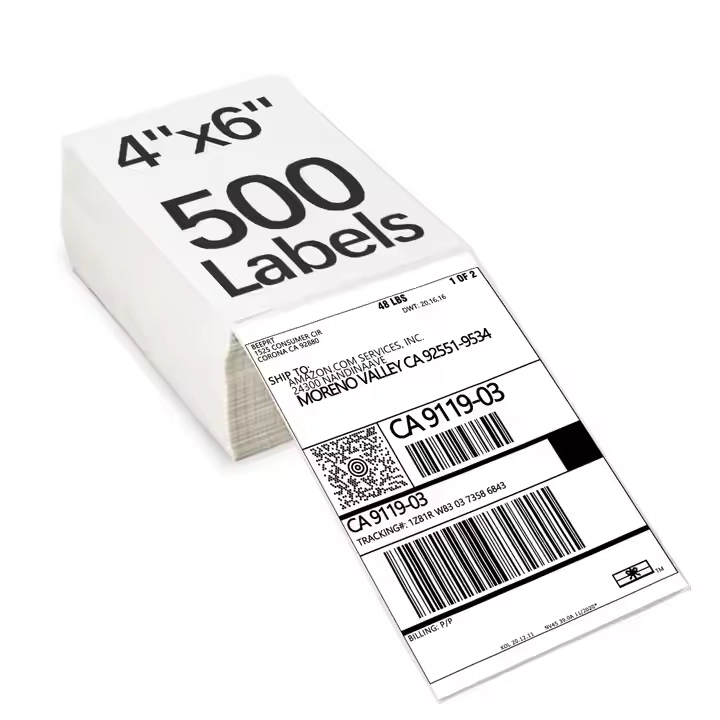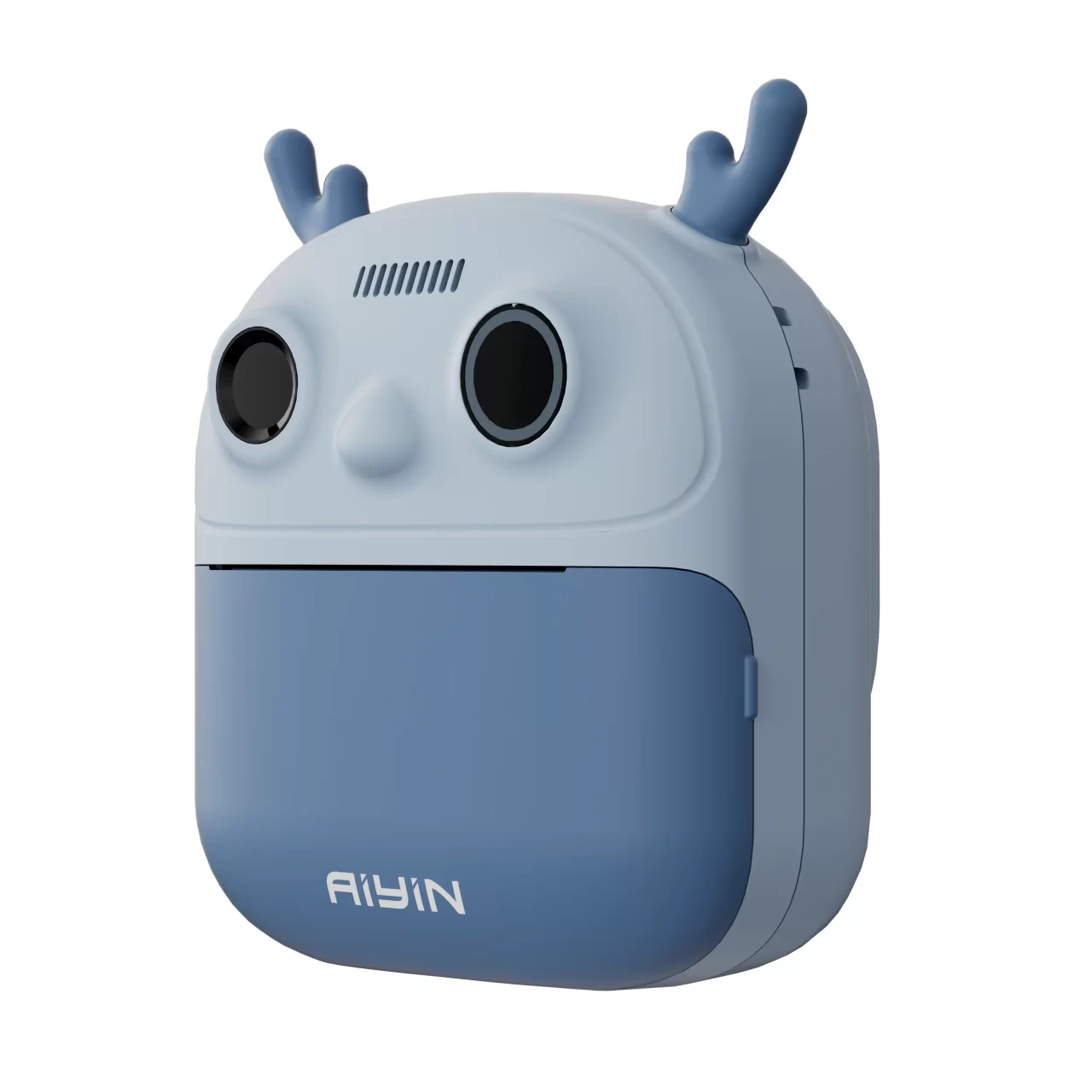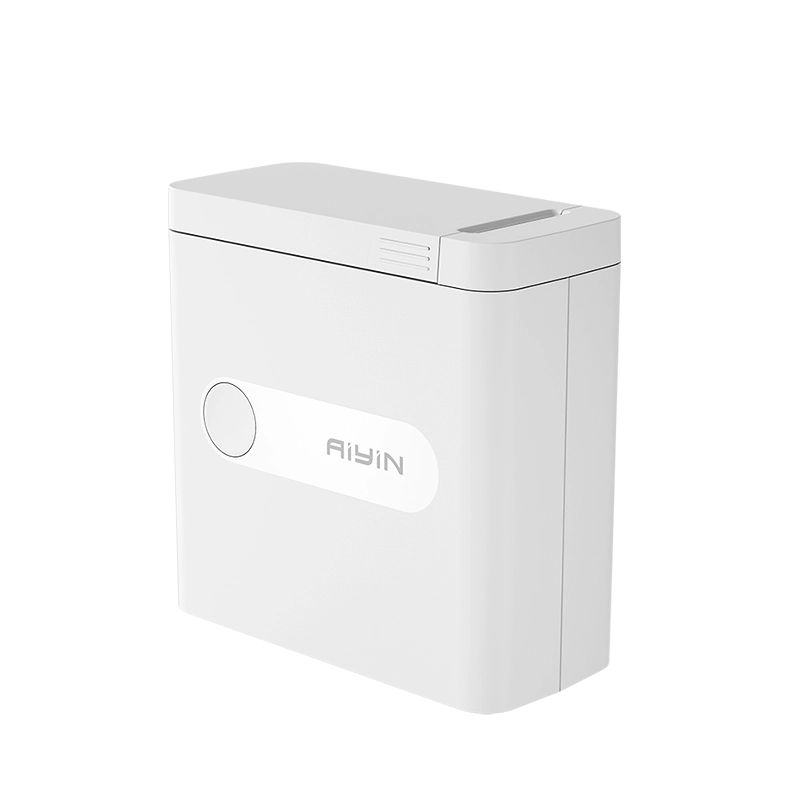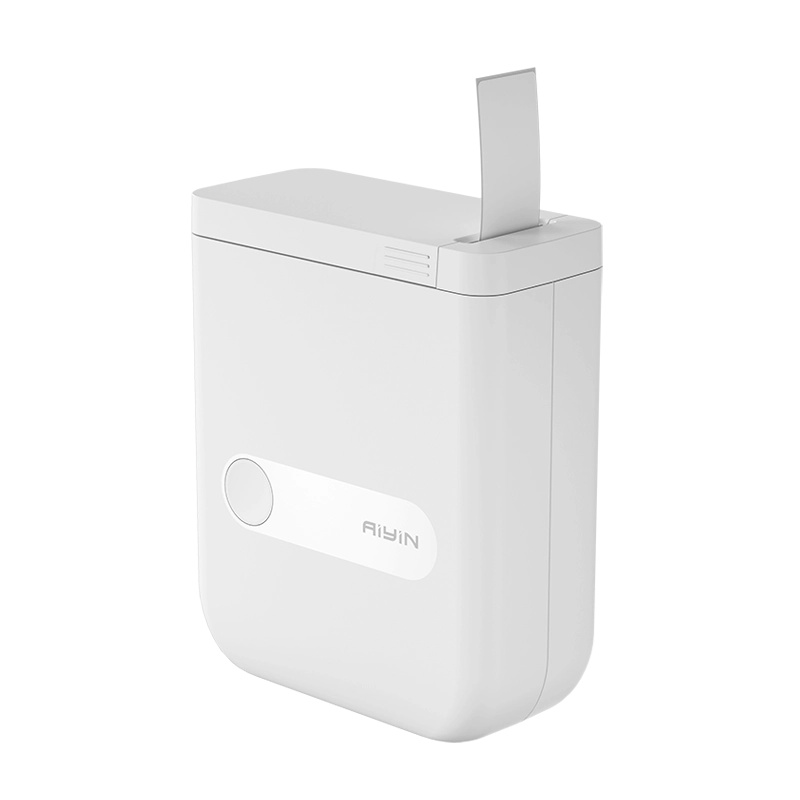Escolher entre a impressão térmica direta e a impressão por transferência térmica é uma das primeiras - e mais impactantes - decisões de qualquer programa de etiquetas. Ambas as tecnologias usam uma cabeça de impressão térmica, mas suas diferenças variam de mídia, durabilidade, custo e aplicações adequadas.
Este artigo, escrito por Aiyin, um Fabricante líder de impressoras térmicas, explica o núcleo diferenças, as vantagens e desvantagens práticas e uma breve lista de verificação para ajudá-lo a escolher o método certo para suas necessidades.
Como cada tecnologia funciona
Térmica direta são feitas aplicando-se calor a um papel ou substrato sintético especialmente revestido. O calor ativa uma camada química (o revestimento térmico) e produz uma marca escura onde o cabeçote de impressão entra em contato com a mídia. Não é necessário usar fita.
Transferência térmica A impressão de etiquetas usa uma interação de três partes: cabeçote de impressão → fita de tinta → substrato. O cabeçote de impressão aquece o ribbon, a tinta do ribbon derrete e essa tinta é transferida para a superfície da etiqueta. Os tipos de ribbon (cera, cera-resina, resina) determinam a adesão e a durabilidade.
Essa estrutura diferença-O revestimento químico da tecnologia térmica direta versus a transferência de tinta mediada por fita da tecnologia de transferência térmica - gera a maior parte dos contrastes em termos de longevidade e resistência.
Mídia e consumíveis: O que você precisa saber
Mídia térmica diretaPapel revestido: papéis revestidos e alguns sintéticos térmicos diretos. Sensíveis ao calor, à luz e a solventes. A ausência de fita economiza custos e reduz o manuseio.
Suprimentos de transferência térmicasubstrato (papel ou sintético) + fita. A escolha da fita é importante:
- Cera = econômico, bom para etiquetas de papel.
- Resina de cera = melhor resistência à abrasão e a produtos químicos leves.
- Resina = maior resistência à abrasão/química/UV, necessária para exposições extremas.
O modelo consumível é um dos principais diferença na logística: a transferência térmica exige estoque de fitas e gera desperdício de fitas usadas; a térmica direta simplifica o estoque, mas pode exigir reimpressões mais frequentes.
Durabilidade e resistência ambiental
A durabilidade é a maior diferença entre as diferentes tecnologias.
- Impressão térmica: a aplicação mais adequada para uso de curto a médio prazo, como recibos, etiquetas de remessa para transporte de curta distância e ingressos para eventos. Fácil de ser afetado por calor, luz solar e solventes; os materiais impressos podem desbotar ou escurecer quando expostos à luz solar.
- Impressão por transferência de calor: adequada para etiquetas de longa duração, como etiquetas de ativos, tambores de produtos químicos, etiquetas externas, etiquetas de freezer, especialmente quando se usa fita de resina de carbono em substratos sintéticos.
Se a vida útil da etiqueta, o desgaste, a exposição a produtos químicos ou o uso ao ar livre forem importantes, a impressão por transferência térmica geralmente é a escolha certa. Apenas com base nessa diferença de durabilidade, geralmente vale a pena o custo adicional dos consumíveis.
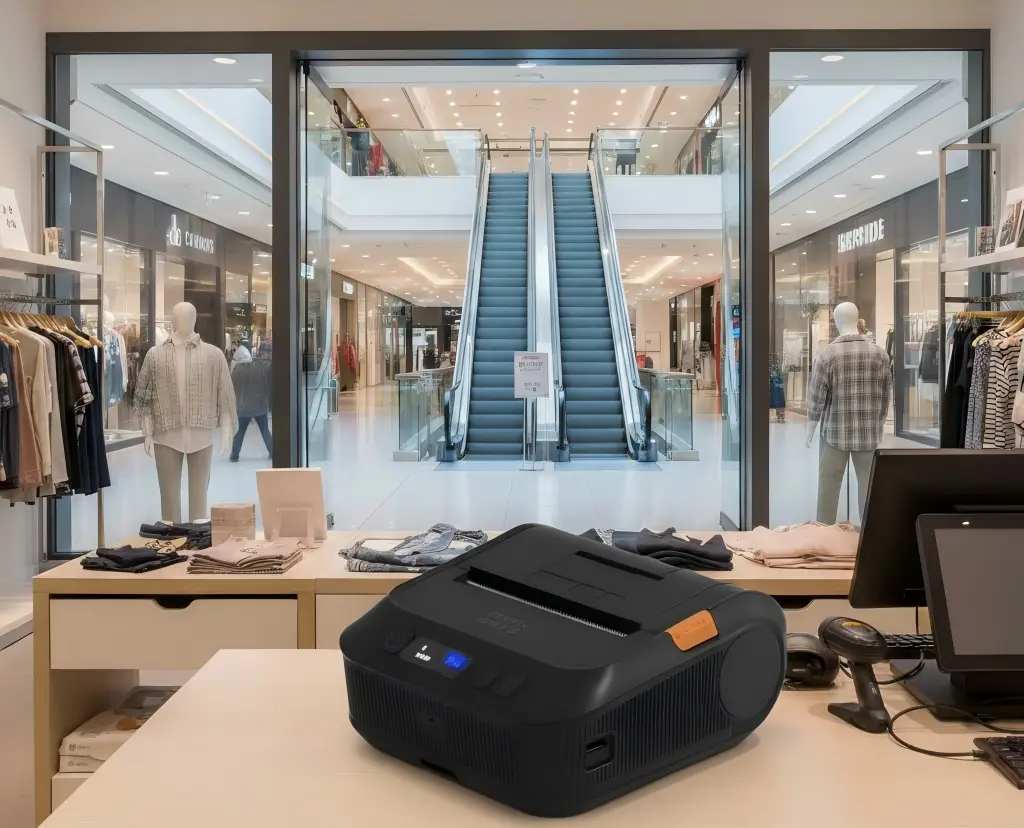
Qualidade de impressão, DPI e detalhes finos
Ambos os métodos suportam uma gama de DPI (203, 300, 600), mas a transferência térmica tende a produzir pretos mais densos e melhor microtexto em substratos exigentes. Para logotipos de alta fidelidade, fontes pequenas ou microcódigos de barrasA transferência térmica em um substrato compatível + fita geralmente produz taxas de sucesso mais altas na primeira digitalização. Essa qualidade diferença é fundamental em setores com rastreabilidade rigorosa ou requisitos de marca.
Velocidade, rendimento e considerações operacionais
- Térmica direta geralmente têm fluxos de trabalho mais simples (sem troca de fitas), o que minimiza o tempo de inatividade na impressão de recibos/etiquetas de alto volume.
- Transferência térmica adiciona etapas: troca de fitas, possíveis rugas nas fitas e descarte de fitas usadas - isso afeta o rendimento e o tempo do operador.
Para impressão de alta velocidade e curta duração (por exemplo, PDV de varejo), a térmica direta frequentemente vence em termos de produtividade. Para etiquetagem durável, em que reimpressões ou falhas são caras, o processo mais lento da transferência térmica ainda pode ser a melhor opção comercial, apesar da taxa de transferência diferença.
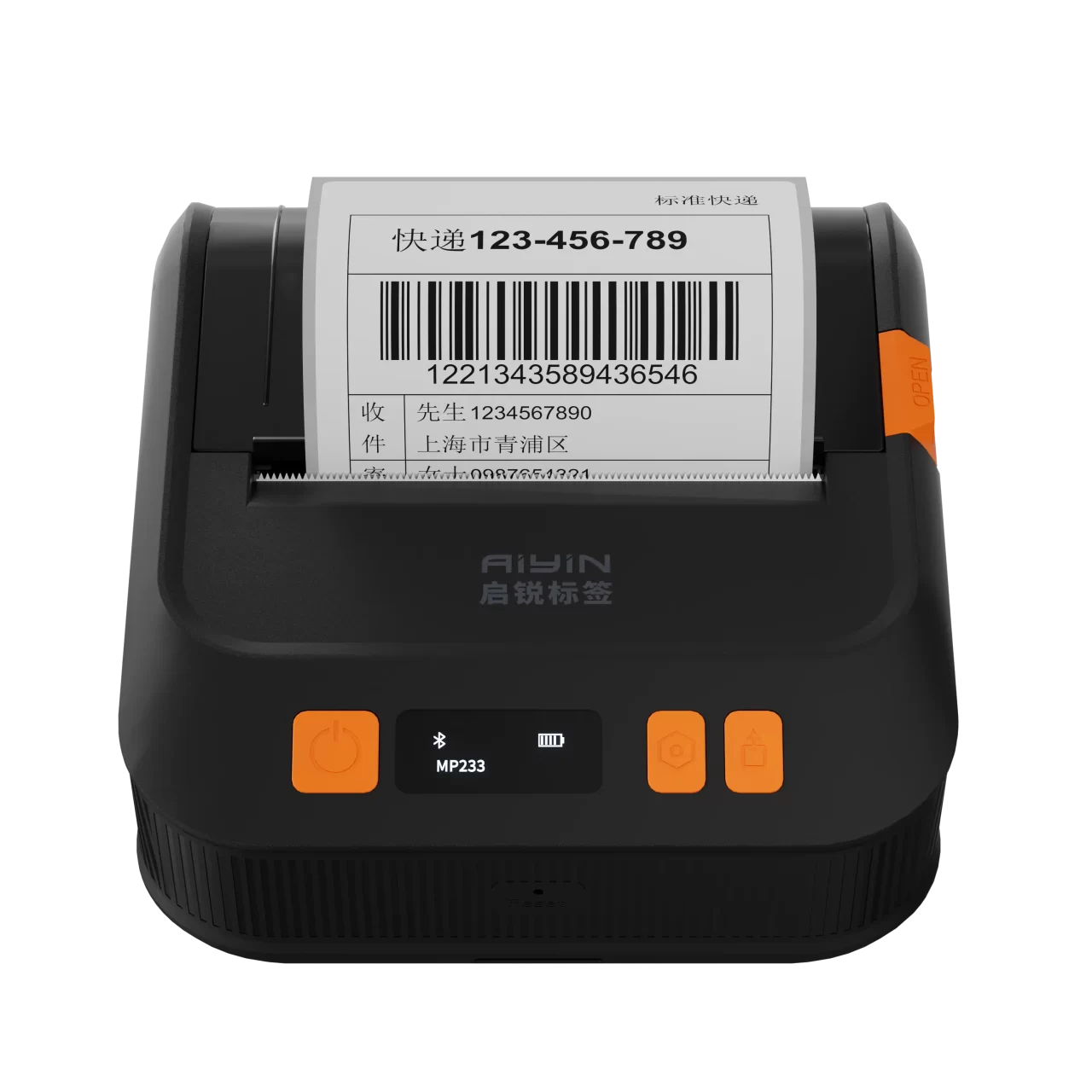
Casos de uso típicos
- Térmica direta: Recibos de PDV, etiquetas de remessa de curto prazo, ingressos para eventos, etiquetas temporárias para prateleiras.
- Transferência térmica: Etiquetas de ativos, etiquetas de tambores para uso externo/químico, etiquetas de dispositivos médicos, etiquetas de inventário de longo prazo, embalagens de alta durabilidade.
Use a tabela acima como um atalho para a tomada de decisão: se a vida útil da etiqueta for inferior a alguns meses e estiver em um ambiente interno, a tecnologia térmica direta é adequada; se a vida útil for superior a alguns meses ou a exposição for severa, opte pela transferência térmica.
Solução de problemas e dicas de transição
- Se as etiquetas térmicas diretas desbotarem: verifique o armazenamento (frio/seco), troque para papel com revestimento superior ou mude para transferência térmica.
- Se as impressões por transferência térmica apresentarem manchas, verifique se o tipo de fita e a pressão/tensão do cabeçote de impressão estão corretos.
- Ao migrar de térmico direto para transferência térmica: refaça a arte-final (densidade da tinta), verifique a detecção de sensor/gap, execute testes de adesão e resistência.
Essas notas operacionais abordam o processo diferença e ajudar a evitar armadilhas comuns.
Resumo
| Item | Térmica direta | Transferência térmica |
|---|---|---|
| Princípio | Calor → papel revestido (sem fita) | Calor → fita transfere tinta |
| Uso | Recibos, etiquetas de curto prazo | Etiquetas de ativos, etiquetas externas/químicas |
| Durabilidade | Curto-médio | Longo e altamente durável |
| DPI / Qualidade | OK em 203 DPI | Melhor em 203/300/600 DPI |
| Custo do equipamento | Inferior | Médio-alto |
| Custo de consumíveis | Somente papel (baixo) | Fita + mídia (superior) |
| Taxa de transferência | Trocas de rolos rápidas e simples | Um pouco mais lento, manuseio de fitas |
| Risco de TCO | Baixo valor inicial; maior risco de reimpressão | Consumíveis mais altos; menor risco a longo prazo |
| Manutenção | Limpeza simples | Gerenciamento de fita, cabeçotes mais resistentes |
| Armazenamento | Sensível ao calor/luz | Mais SKUs; armazenamento separado |
| Escolha quando | Vida útil curta, alta velocidade, baixo custo | Necessidade de longevidade, resistência e conformidade |
Conclusão
A escolha entre a térmica direta e a transferência térmica se resume ao mundo real diferença em durabilidade, custo e desempenho para seus rótulos específicos, e não qual tecnologia é objetivamente "melhor". Faça um pequeno teste piloto com sua mídia, impressora e ambiente reais: esse teste empírico revelará o verdadeiro custo-benefício e mostrará qual método minimiza as reimpressões, o tempo de inatividade e o risco de conformidade para sua operação.
Sobre o Aiyin
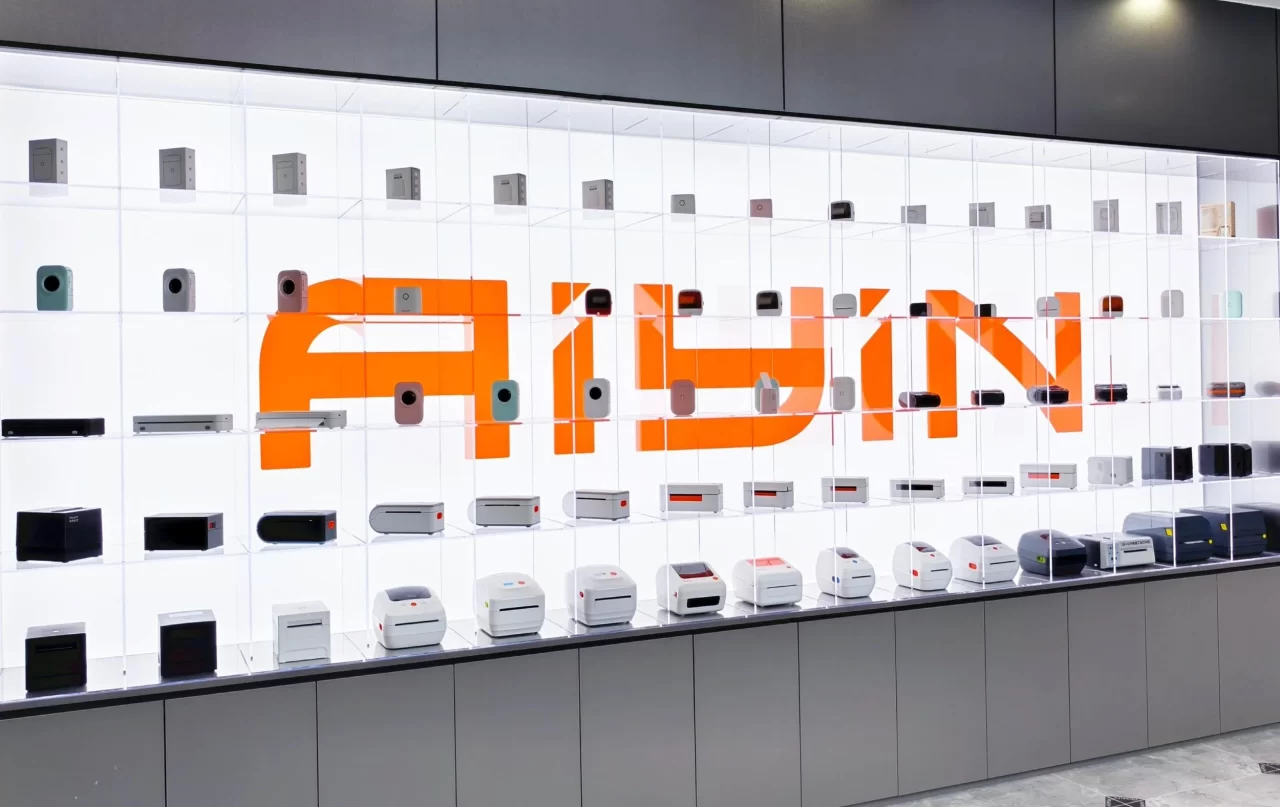
Aiyin é um Fabricante líder de impressoras térmicas com fortes recursos de fábrica, linhas de produção avançadas e rigoroso controle de qualidade. Nosso foco é a inovação e a durabilidade, garantindo que cada unidade ofereça desempenho estável em aplicações de varejo, logística e industriais.
Somos especializados em soluções personalizadas de impressoras térmicas, oferecendo impressoras térmicas no atacado e impressoras de transferência térmica no atacado em termos competitivos. Com serviços de OEM e ODM, a Aiyin apóia parceiros globais que buscam produtos confiáveis e cooperação de fabricação de longo prazo.

